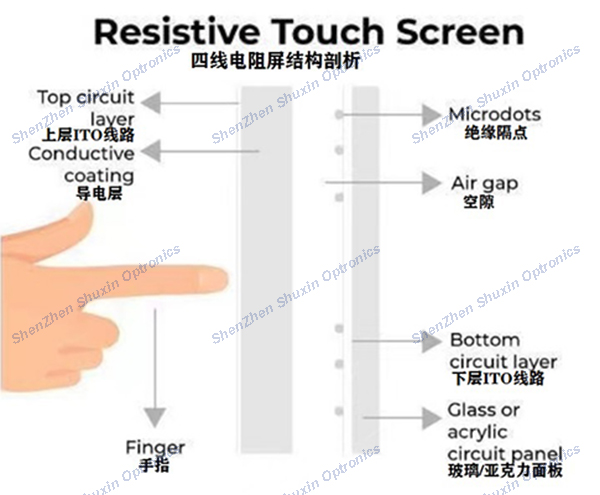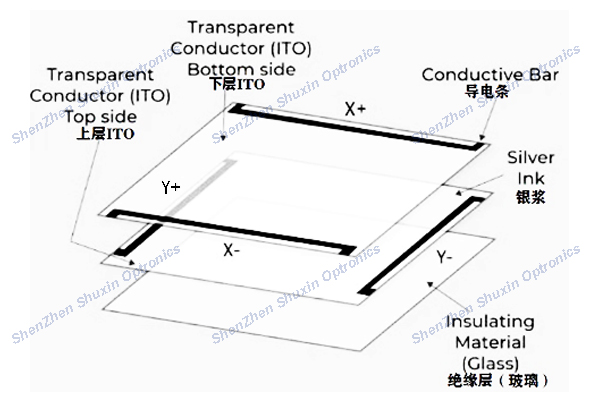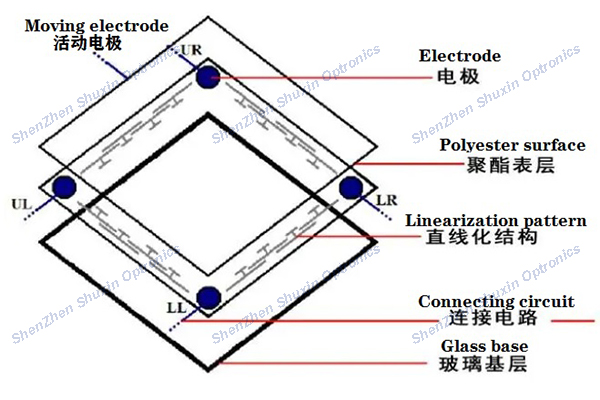The four-wires and five-wires resistive touch screens both are resistive touch screens, which are controlled by pressure sensing so that each layer of the screen is in contact. The touch modes include finger and stylus pen. The following is a simple comparative analysis of the four-wires and five-wires resistive touch screen.
The advantage of the four-wires resistive touch screen is that it can not only calculate the horizontal X and Y coordinates, but also measure the vertical Z coordinates, namely the finger pressure, which can be obtained by measuring the longitudinal contact resistance Rtouch. The measured value of this resistance can be used to quantify the contact pressure, which can be converted into the required instructions.
The disadvantage of the four-wires resistive touch screen is its durability (see reliability below), thus giving birth to the concept of the five-wires resistive touch screen. The differences between the four-wires and five-wires resistive touch screen are analyzed as follows:


Resistive Touch Screen - five wires
五线电阻屏结构剖析

See here, I believe you have a certain understanding of the resistance touch screen, according to your specific needs of the application, choose to use four or five wires resistance touch screen.
Contact: Sophia Jiang
Phone: 15986809949
Tel: 15986809949
Email: sophia@szsxlcm.com
Add: No.98, Shanghenglang, Dalang Street, Longhua District, Shenzhen 518109, Guangdong, China
We chat
